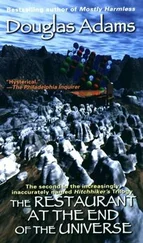“Yes, sir,” says Sub-Lieutenant Petrovič.
“Mr Mikuš, we’re going up,” Kubeš tells the second senior engineer, when Kolesa appears in the command centre in a neoprene suit with scuba diving equipment, an anti-aircraft Stinger missile in each hand.
“Empty all tanks simultaneously,” says Kubeš. “Equalise the buoyancy in time. And you, Kolesa, don’t forget to tie yourself to the bridge. Make sure to aim well, because if you miss, the next depth charge bombardment will tear you to pieces outside a pressurised submarine.”
“I’m rather aware of that, sir,” smiles Kolesa and climbs up.
“Someone help him with those missiles,” the commander says. “When he gets to the bridge, hand them to him fast, and close the hatch.”
The submarine rises towards the surface.
“Surface to periscope depth,” Kubeš says impatiently.
“We’ve reached periscope depth, sir,” says Mikuš.
The periscope slides from its bed; Kubeš observes the surroundings.
“Yes,” he says. “They’re some 200 metres away, 120 degrees. Mr Kolesa, he’s aft of us, across. It’s a nice target. Let’s do it. Good luck, Rudolf.”
Kolesa notes that the commander has called him by his first name for the first time, but has no time to reflect on it.
“The submarine has surfaced,” reports Lieutenant Mikuš. “Pressure is equalised.”
Kolesa climbs to the bridge. The surfacing of a mysterious submarine stirs the Russian destroyer to busy activity on board.
“They seem about to launch a boat,” Kolesa reports to those below.
Besr and Zapletal quickly pass him the two Stingers and close the hatch. Kolesa ties himself to the bridge and squats down. He puts the first firing mechanism on his right shoulder. He pulls down the visor and turns on the targeting module. He prays that his slight software change to the targeting regime will work.
He raises himself enough to put the optics of the targeting module above the bow of the bridge. The targeting lozenge roams the field of vision and when it crosses the image of the destroyer, it stops and begins to flash. Kolesa raises himself, takes a breath and fires the missile. In fascination he watches the Stinger fly out of the tube, cover a few metres and, at a safe distance from the firing tube, ignite the rocket engine and disappear in a flash: there is a fire and explosion on the distant destroyer. Bits of metal, displaced by the explosion, fall in the water.
Kolesa throws away the empty firing device, arms a new one, cursing the slow sighting lozenge, takes aim and fires the second missile.
“Let’s go down!” he shouts down the speaking tube and locks it.
He does not wait to see the outcome, puts on his mask and takes the scuba mouthpiece in his mouth, and then holds onto the bridge rails.
The submarine seems to dive forever. But Kubeš ordered all the tanks to be flooded and started both engines even before the second missile hit.
The way down to a depth of fifty metres is for Kolesa like a horrific journey down a roller coaster. When the submarine stabilises at its right depth, horrible sounds are heard: the sound of the damaged and sinking destroyer’s partitions cracking. Kolesa thinks that the second missile must have hit their ammunition or missile stores.
Even at a depth of fifty metres, the light of a giant fire on the surface illuminates the water. Lt Commander Kolesa can now see all the way to the surface: burning fuel spreading round the destroyer in widening circles, lighting up a whole column of water. In the transparent water round Kolesa move bizarre shadows. If he hadn’t had a mouthpiece, he would have shouted with joy. He grabs the firing tube and bangs it with all his strength against the metal cover of the bridge.
Around him are long columns of pressurized air bubbles.
They’re clearing the tanks and surfacing, Kolesa thinks. He unties himself from the rails and with powerful kicks of his flippers swims away from the Kamýk . He sees the submarine’s giant dark shadow majestically rising. He realizes that others will see the result of his work before him. He sighs, if sighing is possible at fifty metres under water, and then also begins a controlled surfacing, keeping his eyes on the depth gauge.
It is hell up above. The Russian destroyer has broken in half and is sinking quickly. The sea around has turned into a fiery inferno which puts survival out of the question for anyone overboard.
The deck of the Kamýk is now crowded by men following this extraordinary event through their binoculars.
“I’ve never seen anything like it,” says senior bosun Schäffer.
“We’ll wait for Kolesa, then we’re off,” says the captain. “Everyone down except for those on duty. Officers may stay on the bridge.”
The sailors obey the command with quiet muttering.
Silence reigns on the bridge, broken occasionally by explosions from around the sinking destroyer.
“Commodore, sir. May I have permission to give my opinion?” asks Lt Commander Ondriáš, the medical doctor.
“I’m listening, doctor,” says Kubeš, watching the fire.
“In my opinion, this was a mistake,” says Dr. Ondriáš.
“Oh, really?” Kubeš is intrigued.
“Yes,” says Dr. Ondriáš with resolve. “After all, we could have got away without a fight.”
“What fight are you talking about, doctor?” the captain asks. “There was no fight. The Russians were annoying, so they paid for it.”
“Well, exactly,” says Dr. Ondriáš. “They thought we were surrendering. They were already lowering a boat. What if they managed to report our coordinates?”
“Those will soon change, doctor,” says the captain. “Next time, please, don’t criticize your commander’s military decisions. Better get the medical station ready to check Commander Kolesa over. I’d like to know if he’s all right after that superhuman effort. You can leave.”
Dr. Ondriáš climbs down. Kubeš turns to Kraus.
“And what do you think, Commander Kraus,” he asks in a menacing tone. “What do you want to tell me?”
“Just one thing, sir: how many re-programmed Stingers do we still have?” asks the second warrant officer with a smile.
Finally Kolesa surfaces, blowing a column of water from his air pipe.
“Deck guard, launch a boat,” orders Kubeš.
Kolesa is soon fished out and taken into the submarine.
“Put the boat in the cargo hold and let’s go below deck,” says Kubeš. “We need to get out of here.”
Kolesa watches in fascination the remnants of burning fuel and the mighty vortex on the spot where only recently a destroyer stood.
“They’ll be after us now,” he tells himself.
“Get in, Mr Kolesa,” says the captain. “You’re shivering with cold. Report to Dr. Ondriáš, I want you to have a full check-up.”
A chunk of sea rises with a muffled noise and then settles back. The submarine shudders.
“Shit, what was that?” Kraus says in alarm.
“That was the explosion of the depth charges they’d already set to our depth, but hadn’t managed to launch or lock, Mr Kraus,” says Kubeš. “At the set depth they exploded, and so did the locked ones.”
The men climb down to the command centre.
“Dive to snorkel level, release the radar antenna: I want to see two men on radar duty. Full speed ahead, course 200!” says Kubeš. “Prague’s ahead of us, gentlemen!”
* * *
Telgarth regains consciousness when a shot is fired in the room. He blearily turns round. Someone is releasing him from his bonds. Telgarth straightens out, moaning. His tendons, stretched to the limit and inflamed, now react to being relaxed. Telgarth comes to completely. Geľo is bending over him.
“It’s all right now,” he tells him.
Читать дальше








